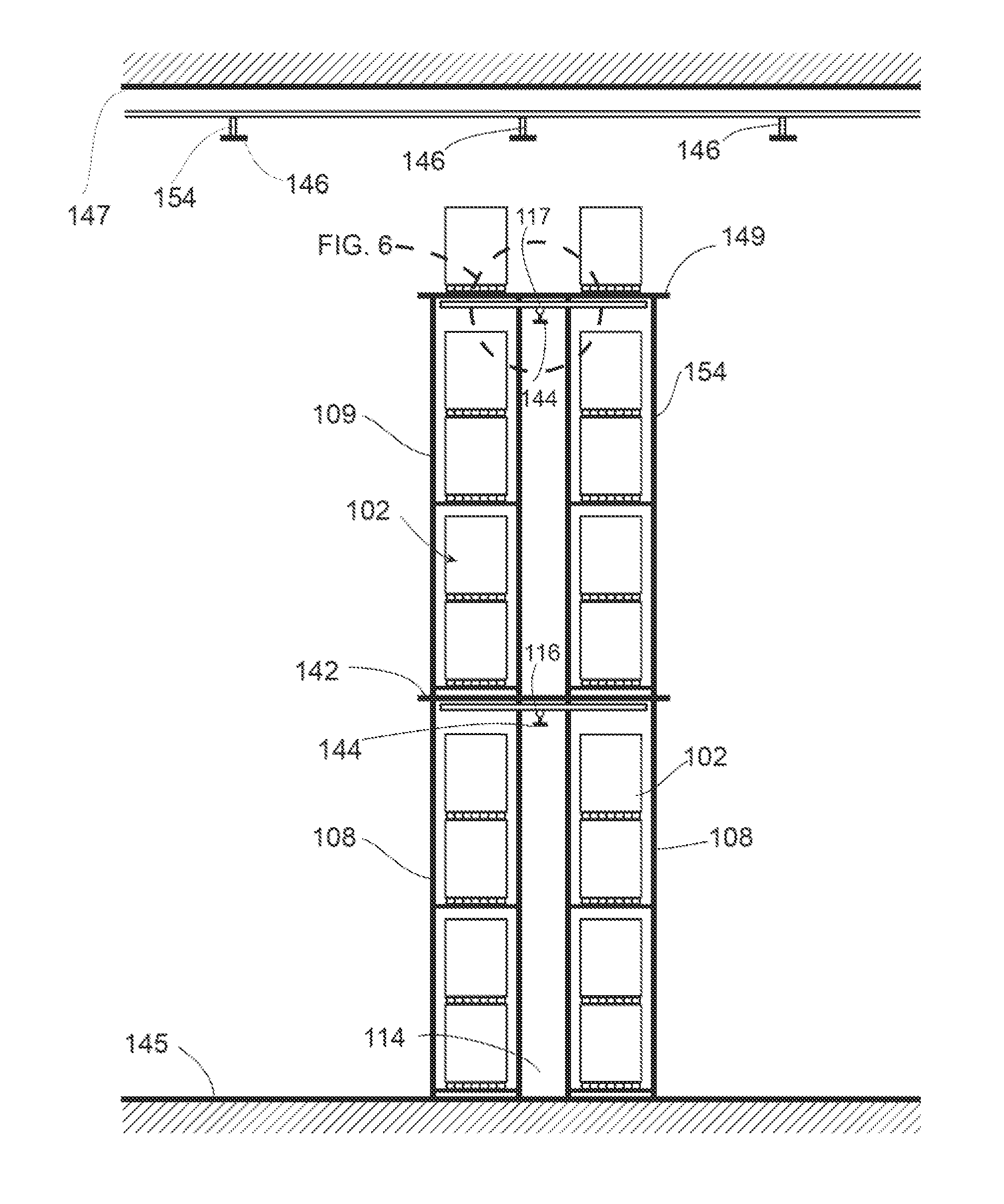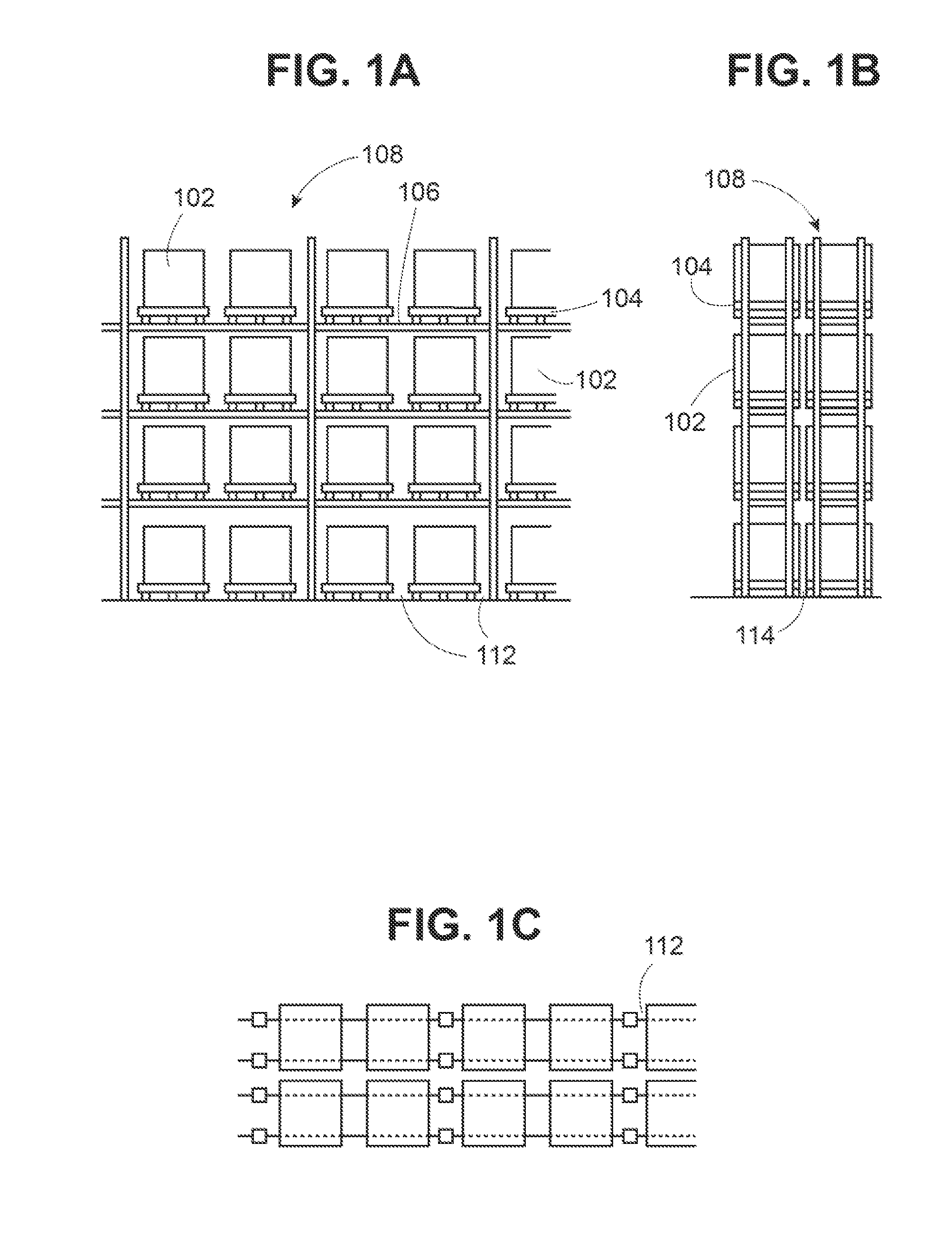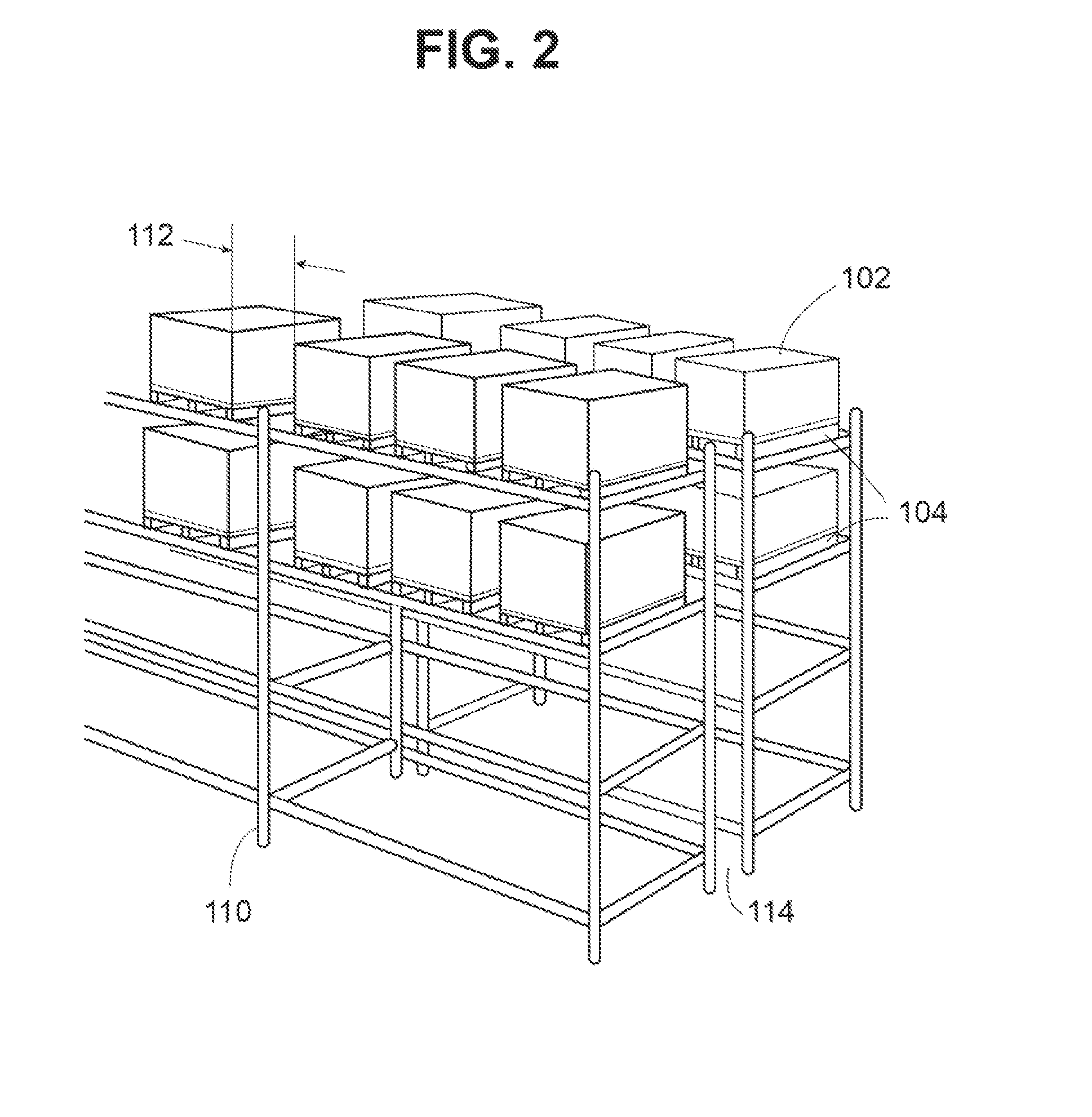In-rack fire protection sprinkler system
a sprinkler system and rack technology, applied in fire rescue, medical science, dental surgery, etc., can solve the problems of increased water demand and high operating pressure required by and the inability of esfr and cmsa sprinklers to protect all storage commodities, and the inability to adequately control the heating-actuated sensing element of the sprinklers on the lower shelves of the rack. to achieve the effect of effective control of the flame, the inability to
- Summary
- Abstract
- Description
- Claims
- Application Information
AI Technical Summary
Benefits of technology
Problems solved by technology
Method used
Image
Examples
Embodiment Construction
[0038]A fire protection system for single, double, and multiple row rack storage and racks for automatic rack systems is provided that includes at least one rack-level sprinkler fluidly coupled to a fluid supply conduit. In one example embodiment, the rack-level sprinkler is constructed as an extended coverage storage sprinkler. For example, in one example embodiment, the extended coverage storage sprinkler used as the rack level sprinkler is a model N252 EC fire sprinkler, manufactured by The Reliable Automatic Sprinkler Company, Inc. (Liberty, S.C.). The N252EC sprinkler has a relatively wide water distribution pattern up to 196 square feet and produces a large droplet size. The N252EC is capable of pre-wetting areas surrounding a fire that have not yet combusted so as to contain the spread of the fire to adjacent areas. In at least one embodiment where extended coverage storage sprinklers are employed as rack-level sprinklers, it is possible to eliminate using face sprinklers in ...
PUM
 Login to View More
Login to View More Abstract
Description
Claims
Application Information
 Login to View More
Login to View More - R&D
- Intellectual Property
- Life Sciences
- Materials
- Tech Scout
- Unparalleled Data Quality
- Higher Quality Content
- 60% Fewer Hallucinations
Browse by: Latest US Patents, China's latest patents, Technical Efficacy Thesaurus, Application Domain, Technology Topic, Popular Technical Reports.
© 2025 PatSnap. All rights reserved.Legal|Privacy policy|Modern Slavery Act Transparency Statement|Sitemap|About US| Contact US: help@patsnap.com



